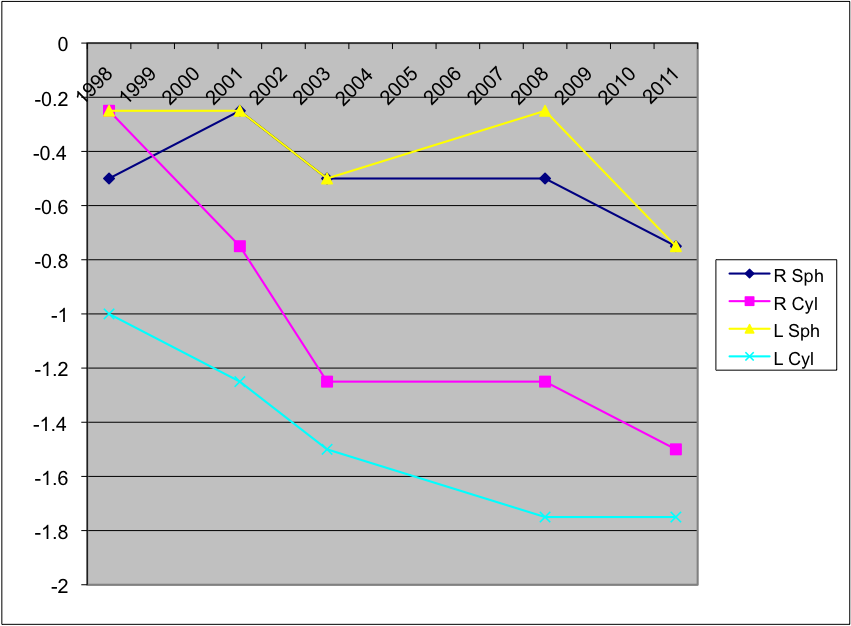I had no idea what a broad range of topics the field of “radio science” covers. I recently attended the National Radio Science Meeting in Boulder, CO, to talk with other researchers about the latest advances in radio astronomy data analysis (e.g., hunting for pulsars). Other topics in the multiple parallel sessions included lightning detection, antenna design, remote sensing of rain, “biophotonics”, “metamaterials”, space plasmas, and “telemetry for monitoring and biosensing”. Intrigued by some of the talk titles, I attended one of the latter sessions.
One goal of this field is to develop and test low-power, efficient radio communications for implantable medical devices (IMD). One envisioned application is for people in very rural areas who don’t have regular access to a doctor. Internal sensors could monitor blood pressure and various nutrient levels, then report them to an external base station they could visually check. As one presenter imagined, “Low potassium? Push a button and find out what you should eat for the next week!”
The devices are still under development, and in the initial work they’re focusing on the ability to monitor blood pressure. They aren’t yet up to human trials. Researchers from Texas A&M and Mississippi State University described how they’d started with rats. They showed pictures of the rat surgeries needed to implant the tiny antennas and then described the experiments, which aimed to evaluate whether the simulated response from the antennas was the same as what was observed when it propagated through rat muscle, fat, and skin. Unfortunately, the presenter noted, they’d been forced to euthanize all of the rats after the tests, because they hadn’t coated the antennas with a “biocompatible material” and therefore by animal testing rules they could not let the animals live. (It seems odd to me that this oversight would not have been caught during the protocol review process!) At any rate, the results showed a not very good match between the simulated response and what they actually got, which they attributed to differences between human skin (in the simulation) and rat skin (in reality).
As a side note, I kept wondering if these tests really qualified for the “in vivo” term the presenters applied, since the rats went to sleep for the surgery and (presumably) never woke up. The point at which they were euthanized was never specified. I started wondering whether live fat/muscle/skin tissue has different dielectric properties than dead tissue, which I assume it must, since circulating blood probably affects any signal propagation. This particular experiment seemed perfectly designed to test both cases. But I wasn’t quite up to asking this question after the talk.
The next presenter (from the same group) continued on to describe their subsequent experiments with larger animals (pigs). Pig skin apparently is a much better match to human skin (insert obligatory “white meat” joke here), and they got an excellent match with their simulation. In this case, they used a proper coating and the pigs were permitted to live. The presenter also commented on how very expensive these particular bred-for-experimentation pigs are (about $10,000 each), although I had to wonder whether one must purchase an entire pig to do a radio antenna transmission test, or whether one can give it back afterwards to be used for other experiments, or possibly time-share with other researchers. But again I wasn’t actually able to ask a question, being more sort of transfixed in a rather distasteful fascination and slightly nauseated by all of the graphic surgery images!
These talks didn’t spend much time on other important IMD constraints, like where power for the wireless transmitter comes from and how to dissipate the excess heat generated without cooking the animal (or human) internally. They noted that the devices had a 25 day lifetime if in continuous use, or 1.7 months if only transmitting periodically, so I’m guessing that limit was based on some nonrenewable power source being exhausted.
Overall, the envisioned future of such devices is certainly promising—and I was kind of disappointed to see how premature such investigations apparently are (if this represents the state of the art). I would also have liked to hear more about the kind of technology used for the sensors that collect the data to be sent by the antennas!

 A few days later, I had a thoroughly unexpected moment of convergence. I was visiting the Evergreen Air and Space Museum and marveling at, among other things, their full size model of the Spirit of St. Louis. While reading the poster about Charles Lindbergh, I learned that among his many interests and activities, in 1935 he also invented a perfusion pump – a device meant to keep organs alive outside the human body by artificially circulating oxygen and nutrients (and keeping out infection). I’m sure he’d be thrilled to see the latest advances, less than a hundred years later.
A few days later, I had a thoroughly unexpected moment of convergence. I was visiting the Evergreen Air and Space Museum and marveling at, among other things, their full size model of the Spirit of St. Louis. While reading the poster about Charles Lindbergh, I learned that among his many interests and activities, in 1935 he also invented a perfusion pump – a device meant to keep organs alive outside the human body by artificially circulating oxygen and nutrients (and keeping out infection). I’m sure he’d be thrilled to see the latest advances, less than a hundred years later. 

 I’m used to giving tours to friends and visitors at work, but it’s not often that *I* get to take a tour of a friend’s workplace. Last Friday, I was treated to a behind-the-scenes view of a Kaiser pharmacy (thanks, Jim!).
I’m used to giving tours to friends and visitors at work, but it’s not often that *I* get to take a tour of a friend’s workplace. Last Friday, I was treated to a behind-the-scenes view of a Kaiser pharmacy (thanks, Jim!).